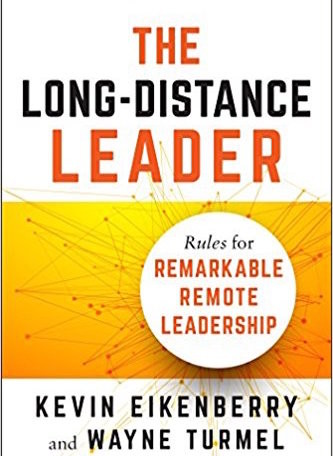 Guest Post by Kevin Eikenberry
Guest Post by Kevin Eikenberry
Organizations around the world are trying to come to grips with the way we work today. How does work get done effectively when people aren’t in the same place at the same time?
Telework, even part-time telework, alters team effectiveness in unexpected ways. To prepare leaders for remote work teams, organizations must address some hard questions in three key areas: culture, leadership behavior and a support plan.
Organizational Culture is simply “the way things are done in your organization” and every company has one. The key question is whether you’re building a specific culture intentionally, or if you are just allowing a culture to organically emerge and think you’ll deal with whatever comes out.
In order to intentionally create a successful culture—particularly in a remote environment where people don’t spend the workday together—you must ask yourself some important questions:
- What kind of organization do you want to be?
- Does your current culture match that vision?
- How is working remotely impacting the development of that culture?
Do you want a culture that is very task-oriented or do you prize brainstorming and teamwork? If you believe a collaborative culture is best for your company, what are you and your leaders doing to create those dynamics?
Leadership Behavior is precisely what it sounds like: you must identify what leaders actually do on a regular basis that not only gets work done, but supports your efforts at building your desired culture. For example, what if your goal is to build strong, trusting work relationships, but the leaders won’t use webcams or pick up the phone and communicate solely by email? Not a great way to build trust. The questions you need to ask are:
- What behaviors do you expect from “long-distance” leaders? How will they deal with the key difference-maker in leading remotely: technology? How will they utilize effective leadership behaviors such as coaching, delegation, setting expectations and managing performance remotely? When it comes to behavior, your leaders must know which tools to use for which purposes and also be able to use those tools effectively.
- What skill gaps must be addressed? You need to continue to address the traditional leadership and management behaviors you’ve always expected, but also look at how working remotely and through technology impacts the way your leaders behave. They may need to develop technical skills (how to use the various tools at a high level of efficiency) and learn how to adjust their existing leadership behaviors and instincts to address the way work is mitigated by distance and technology.
A Support Plan must be in place at an organizational level. Individual managers may be able to take control of their own development, but if you want consistency across the organization and a “rising tide to raise all boats” there has to be coordination of efforts. The two important components are:
- A plan for leaders in your organization. This sounds obvious enough, but it’s incomplete without the second component.
- A plan to develop the individual remote workers. Without understanding how working remotely impacts them, and understanding the context for what the leader is attempting to do, workers and their managers often find themselves at odds. “Why is my boss bugging me to use a webcam?” is a really common question, and one that is easily addressed if everyone understands the end results and the technology at their disposal and has reached agreement on how to use it effectively.
 Kevin Eikenberry is founder and Chief Potential Officer of the Kevin Eikenberry Group. He’s been named one of Inc.com’s Top 100 Leadership and Management Experts in the World, and is the author of several books, including Remarkable Leadership. Wayne Turmel (along with Kevin) is the co-founder of The Remote Leadership Institute and the author of many books, including ATD’s 10 Steps to Successful Virtual Presentations.
Kevin Eikenberry is founder and Chief Potential Officer of the Kevin Eikenberry Group. He’s been named one of Inc.com’s Top 100 Leadership and Management Experts in the World, and is the author of several books, including Remarkable Leadership. Wayne Turmel (along with Kevin) is the co-founder of The Remote Leadership Institute and the author of many books, including ATD’s 10 Steps to Successful Virtual Presentations.
Kevin and Wayne have teamed up to write The Long Distance Leader: Rules for Remarkable Remote Leadership, the essential guide for leaders of remote teams.












